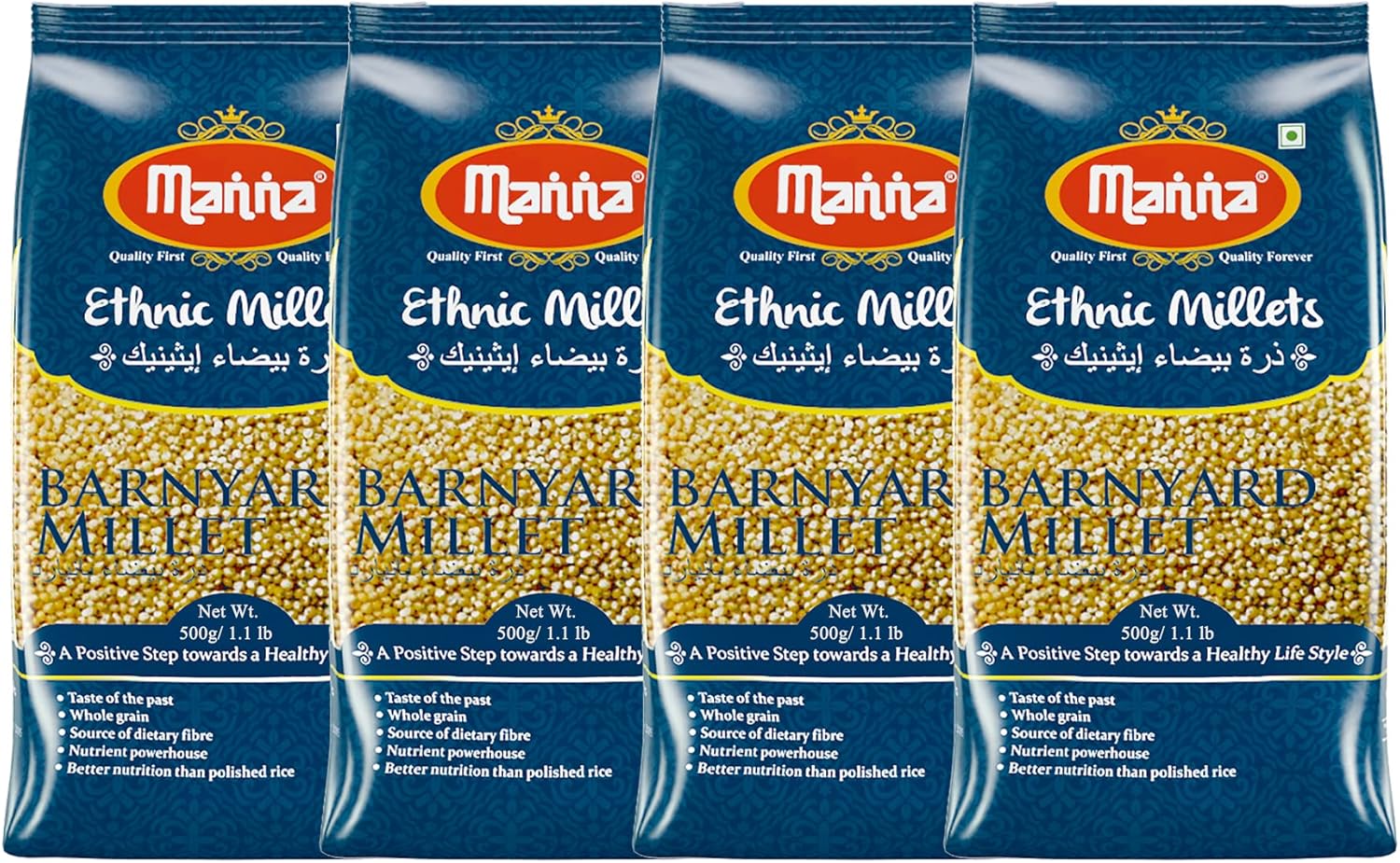About this deal
Millet was growing wild in Greece as early as 3000 BCE, and bulk storage containers for millet have been found from the Late Bronze Age in Macedonia and northern Greece. [28] Hesiod describes that "the beards grow round the millet, which men sow in summer." [29] [30] And millet is listed along with wheat in the third century BCE by Theophrastus in his "Enquiry into Plants". [31] Research [ edit ] Parker J, Yunginger J, Swedlund H. Anaphylaxis after ingestion of millet seeds. Journal of Allergy and Clinical Immunology. 1981;67(1):78-80. Millets 2009 (PDF). India: National Forum for Policy Dialogues. p.4. Archived (PDF) from the original on 28 September 2020 . Retrieved 17 September 2021. Palaeoethnobotanists have found evidence of the cultivation of millet in the Korean Peninsula dating to the Middle Jeulmun pottery period (around 3500–2000 BCE). [15] Millet continued to be an important element in the intensive, multicropping agriculture of the Mumun pottery period (about 1500–300 BCE) in Korea. [16] Millets and their wild ancestors, such as barnyard grass and panic grass, were also cultivated in Japan during the Jōmon period sometime after 4000 BCE. [17]
Hilu, Khidir W. (1994). "Evidence from RAPD markers in the evolution of Echinochloa millets (Poaceae)". Plant Systematics and Evolution. 189 (3): 247–257. doi: 10.1007/BF00939730. S2CID 33838562.
Sood S, Khulbe RK, Kumar A, Agrawal PK, Upadhyaya HD (2015) Barnyard millet global core collection evaluation in the submontane Himalayan region of India using multivariate analysis. Crop J 3:517–525. https://doi.org/10.1016/j.cj.2015.07.005 Nutritional advantages of barnyard millet and opportunities for its processing as value-added foods Nolde SB, Vassilevski AA, Rogozhin EA, Barinov NA, Balashova TA, Samsonova OV, Grishin EV (2011) Disulfide-stabilized helical hairpin structure and activity of a novel antifungal peptide EcAMP1 from seeds of barnyard grass ( Echinochloa crus-galli). J Biol Chem 286:25145–25153. https://doi.org/10.1074/jbc.M110.200378 How to consume 5 millets together, quantity wise of each . It can be taken as or mixed with other wearables. The term millet is sometimes understood to comprise sorghum. The annual harvest of sorghum is twice the amount of other millets. [3] Of these pearl millet is the most common. Pearl millet and sorghum are important crops in India and parts of Africa. [4] Finger millet, proso millet, and foxtail millet are also important crop species.
Nazni P, Karuna TD (2016) Development and quality evaluation of barnyard millet bran incorporated rusk and muffin. J Food Ind Microbiol 2:2 Tsehaye Y, Berg T, Tsegaye B, Tanto T (2006) Farmers’ management of finger millet ( Eleusine coracana L) diversity in Tigray, Ethiopia and implications for on-farm conservation. Biodivers Conserv 15:4289–4308. https://doi.org/10.1007/s10531-005-3581-3 Hilu KW (1994) Evidence from RAPD markers in the evolution of Echinochloa millets (Poaceae). Plant Syst Evol 189:247–257. https://doi.org/10.1007/BF00939730 Gupta A, Mahajan V, Kumar M, Gupta HS (2009) Biodiversity in the barnyard millet ( Echinochloa frumentacea Link, Poaceae) germplasm in India. Genet Resour Crop Evol 56:883–889 Baltensperger, David D. (2002). "Progress with Proso, Pearl and Other Millets" (PDF). Archived (PDF) from the original on 21 April 2003.Kofuji K, Aoki A, Tsubaki K, Konishi M, Isobe T, Murata Y (2012) Antioxidant activity of β-glucan. ISRN Pharm 2012:1–5. https://doi.org/10.5402/2012/125864 Crawford, Gary W. (1992). "Prehistoric Plant Domestication in East Asia". In Cowan C.W.; Watson P.J (eds.). The Origins of Agriculture: An International Perspective. Washington: Smithsonian Institution Press. pp.117–132. ISBN 978-0-87474-990-8. Millets are major food sources in arid and semiarid regions of the world, and feature in the traditional cuisine of many others. In western India, sorghum (called jowar, jola, jonnalu, jwaarie, or jondhahlaa in Gujarati, Kannada, Telugu, Hindi and Marathi languages, respectively; mutthaari, kora, or panjappullu in Malayalam; or cholam in Tamil) has been commonly used with millet flour (called jowari in western India) for hundreds of years to make the local staple, hand-rolled (that is, made without a rolling pin) flat bread ( rotla in Gujarati, bhakri in Marathi, or roti in other languages). Another cereal grain popularly used in rural areas and by poor people to consume as a staple in the form of roti. Other millets such as ragi (finger millet) in Karnataka, naachanie in Maharashtra, or kezhvaragu in Tamil, "ragulu" in Telugu, with the popular ragi rotti and Ragi mudde is a popular meal in Karnataka. Ragi, as it is popularly known, is dark in color like rye, but rougher in texture. Sharma S, Saxena DC, Riar CS (2016) Analysing the effect of germination on phenolics, dietary fibres, minerals and γ-amino butyric acid contents of barnyard millet ( Echinochloa frumentaceae). Food Biosci 13:60–68 Hello all, I am Srividhya, the person behind this blog. I firmly believe that the mouth is the way to the heart. My blog is all about vegetarian and vegan food with unique and exciting recipes from all over the world. From traditional, authentic recipes to fusion and eggless bakes, you can find it all here! Read more → Enjoy My Cookbooks
Lohani UC, Pandey JP, Shahi NC (2012) Effect of degree of polishing on milling characteristics and proximate compositions of barnyard millet ( Echinochloa frumentacea). Food Bioprocess Technol 5:1113–1119 Gupta A, Sood S, Agrawal PK, Bhatt JC (2015) B 29: an Easy Dehulling Barnyard Millet ( Echinochloa frumentacea Link) genotype. Natl Acad Sci Lett 38:21–24. https://doi.org/10.1007/s40009-014-0295-7 Chandraprabha S, Sharon CL (2021) Optimisation of conditions for barnyard millet germination. Plant Arch 21:1676–1680 Joshi V (2013) Assessment of genetic variability and identification of genotypes for different traits in Barnyard millet ( Echinochola spp.). Int J Agric Food Sci 4:65–67 Japanese barnyard millet was domesticated from Echinochloa crus-galli. [4] [5] As is common for grain domestication, it underwent grain enlargement. That part of the process took one to two thousand years, occurring in Japan. [4] Etymology [ edit ] Echinochloa esculenta from the Seikei Zusetsu agricultural encyclopediaRaw millet per 100 g, Full Report". USDA National Nutrient Database, Release 28. 2015 . Retrieved 3 December 2015. Michaelraj PSJ, Shanmugam A (2013) A study on millets based cultivation and consumption in India. Int J Market Financ Serv Manag Res 2:49–58
 Great Deal
Great Deal 